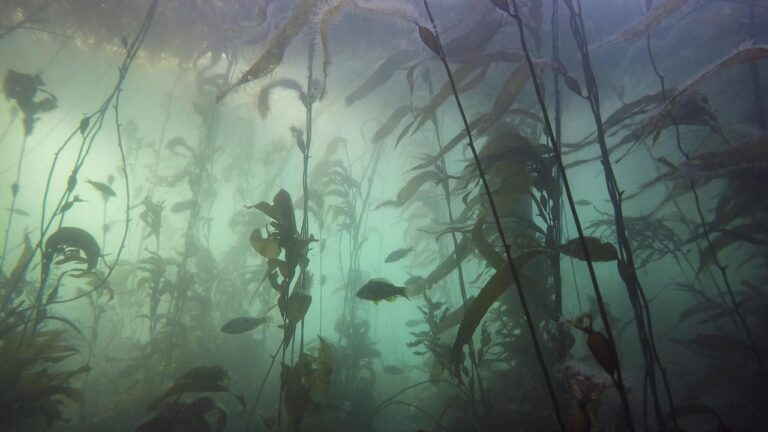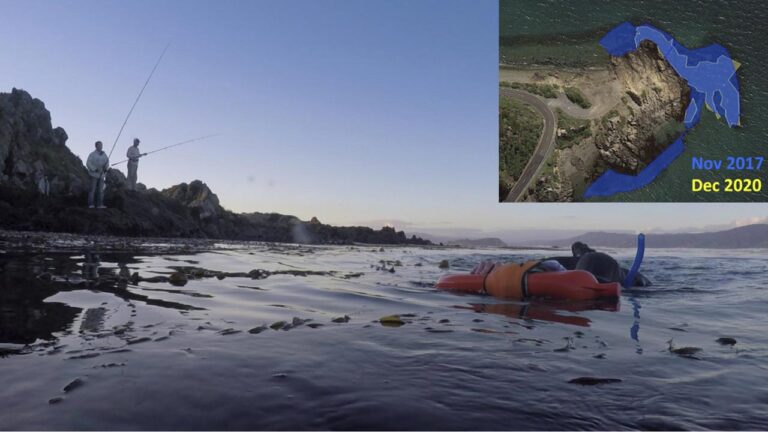Monitoring Giant Kelp
Last updated June 2023 (posted Dec 2020) by Nicole – Marine Citizen Science, Seaweed, Wellington Underwater Club



Diving in giant kelp forests started my passion for seaweed! Giant kelp, Macrocystis pyrifera, is particularly visible with fronds reaching up from the seafloor and building thick floats on the surface in good conditions (it can grow a staggering 60 cm a day under ideal conditions!).
Giant kelp is less likely to occur in areas where water temperatures exceed 18-19°C and the inner bays of Wellington harbour have already been noted as the very limit of growth. We are interested in how summer water temperatures effect the growth and abundance of giant kelp at Kau Bay, one of the common dive sites in the harbour.
To account for summer and winter season volunteers snorkel around the giant kelp bed in May/June and Nov/Dec using a GPS device to plot the surface area on maps. We also use temperature monitoring data from the regional council at the site to get an indication of a warm summer (red arrow, water temperature exceeds 18-19°C frequently) or cooler summer (blue arrow, water temperature mainly below 18-19°C). We started using a Hobo temperature logger (thanks VUCEL!) in the project site in November 2021 and use a daily temperature records since. This allowed us to record temperature spikes we would have not seen in the regional council data.
Seaweed forests face a range of threats beside increasing water temperatures and overgrazing by exploding numbers of kina (sea urchins) due to the lack of natural predators can turn thriving seaweed forests into barren rock within 12-18 months. Other threats include sedimentation, sand inundation, coastal development and pollution (including impact by weed killers).
Read more about the project:
- Monitoring Giant Kelp (June 2016 – June 2019, pdf). Article published in the GUE journal Quest, includes project background, drone monitoring and an initial kina survey
- June 2021 kelp survey (pdf) including updated temperature plots
- Dec 2021 & June 2022 (pdf) including Hobo temperature sensor data at marker one.
- Dec 2022 (pdf) & June 2023 (pdf) with Hobo temp sensor data
Project Baseline Wellington – Monitoring Giant Kelp is a Citizen Science Project by volunteer divers. Contact us for more information.
Back to Seaweed Forests of Wellington.

